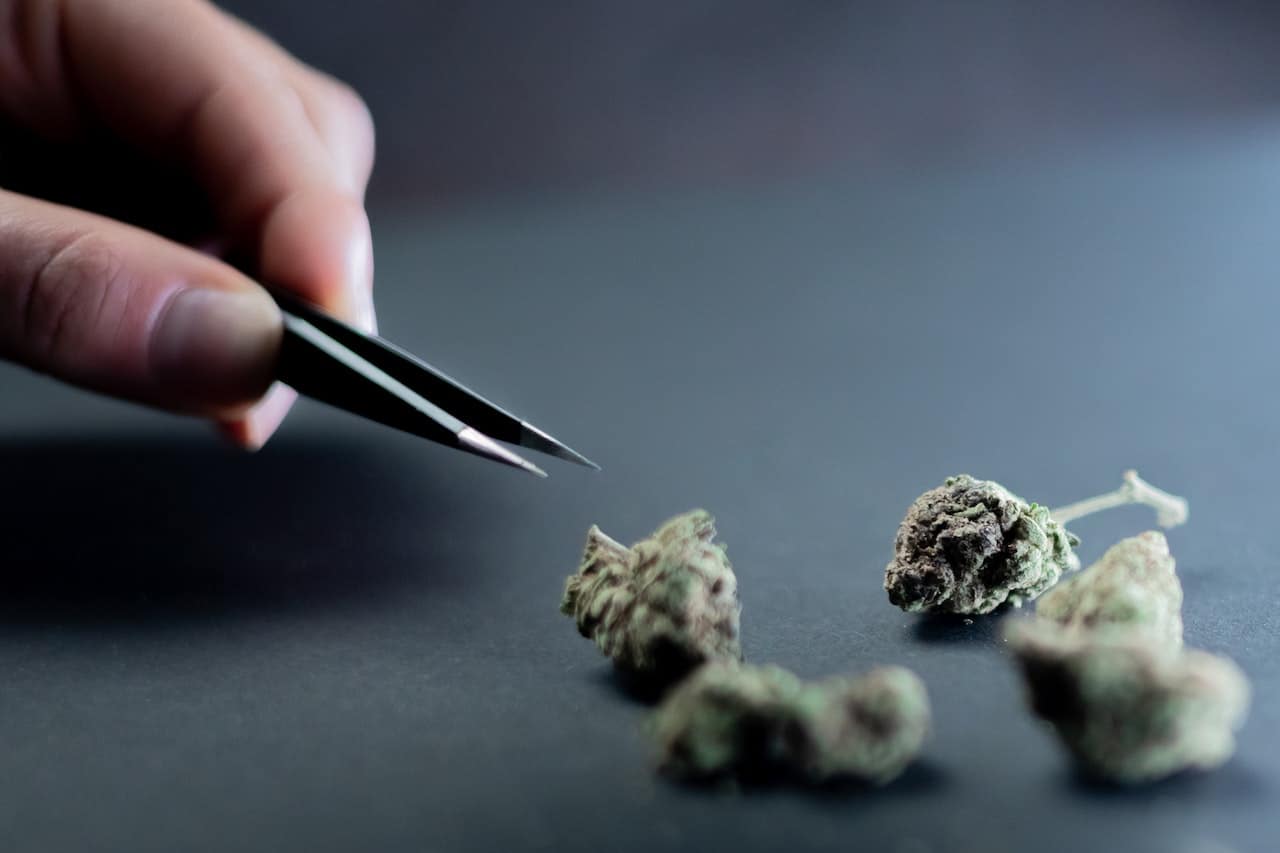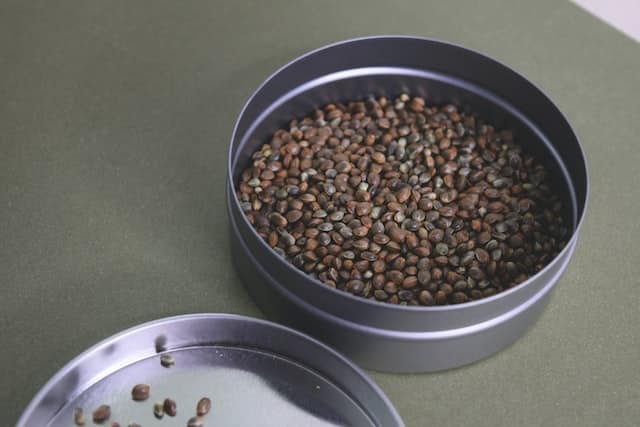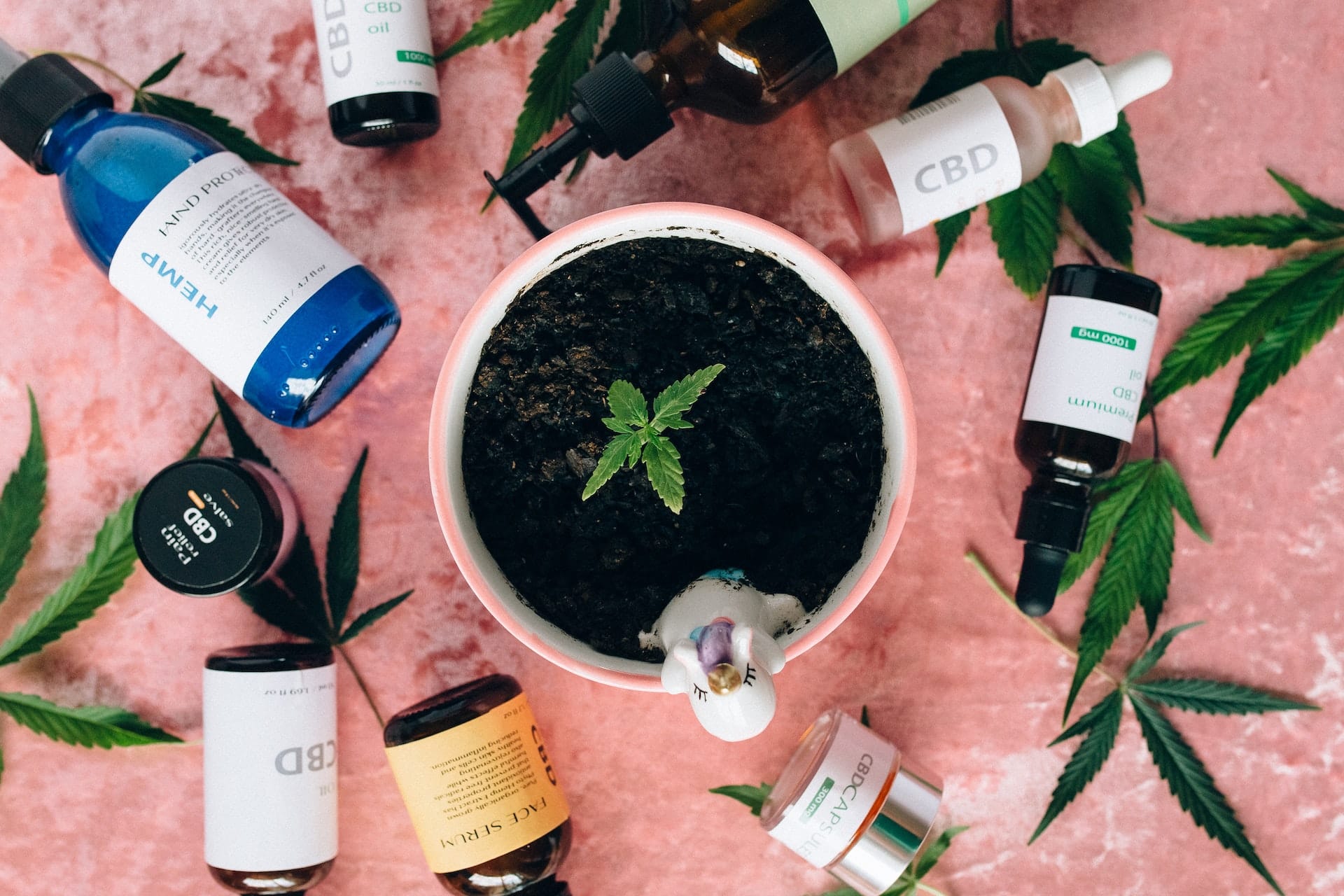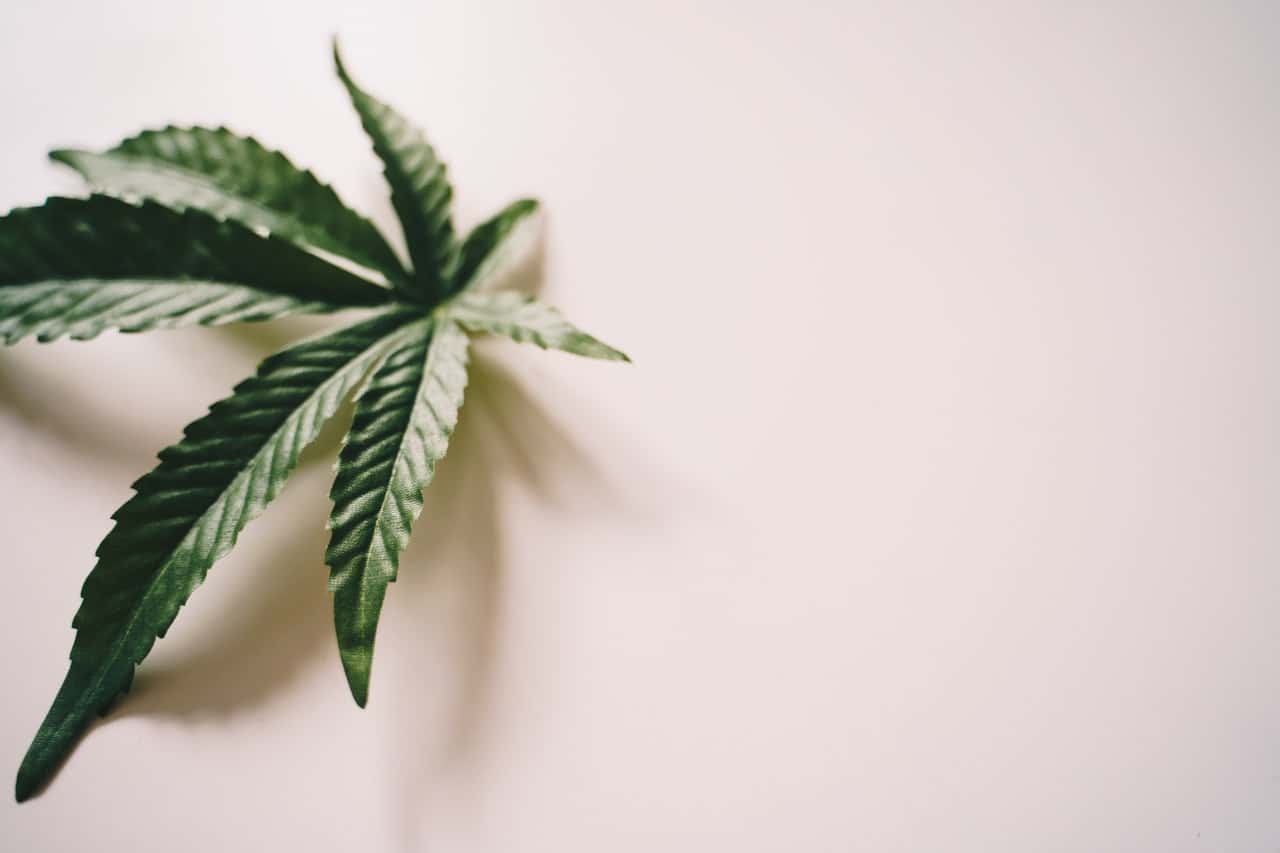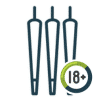Visit CBD Oils
Theoil CBD is one of the solutions, if not the leading solution, put forward by the professionals of products derived from hemp. Perfectly legal, these solutions are quick and easy to consume, and are said to have multiple benefits (notably in terms of stress and anxiety). Finally, unlike products such as CBD flowers or CBD resins (and other substances), CBD oils are not targeted by the authorities. They can easily be bought, sold and consumed in bulk.
In this complete guide to CBD oilsThe CBD Wholesaler presents everything you need to know about the subject, especially if you're a business! A step-by-step guide that explains everything you need to know about the right oils from hemp and, above all, the different ways you can get started and create your own brand. In short, it's the ideal tool for companies and professionals looking to strengthen their brand, develop their expertise and increase their sales.
L'oil de CBD en vrac, en flacons : tout savoir sur l'CBD oil des professionnels
Benefits and composition of CBD oil
The different types ofoils CBD extractions
What are the different types ofoils CBD production?
How to recognize the quality of CBD oils ?
CBD oil and oils carriers: how to choose them?
What is a certificate of analysis foroil ?
Choosing your CBD oil white label, depending on packaging
How do I brand and package my CBDoils ?
CBD oil in bulk, in bottles: everything you need to know aboutCBD oil for professionals
CBD oil is undeniably one of the most widespread and popular cannabidiol-rich solutions. So it's only natural for a CBD Shop, e-tailer or similar, to offer this type of solution. But in what form?
Some prefer to sell well-establishedoils brands, whose products customers can find just about anywhere, while others prefer to create their own brands.
TheCBD oil white label, the solution for CBD Shops
How do you do it? White labeling! In fact, it's possible to sell oils CBD, labelled with your company's name, without having to invest in research, development and packaging. You have two options:
- CBD oil to buy in bulk:CBD oil in bulk is the perfect solution if you have your own bottles, labels and packaging boxes. Onceoil is in your 10 or 30ml bottle, you can close it, add the labels and place it in your own packaging before placing the product in your stalls.
- CBD oil in bottles (to be labeled): this solution is quicker thanoil in bulk, as you don't have to manage stocks of empty bottles. All you have to do is Put on your labels, place your oils CBD in your packaging boxes and offer them for sale.
As you can see, creating a brand can take just a few minutes. Be careful, however, not to trust just any white-label supplier. It's better for you, your brand and your image to trust a recognized professional.
Which white-labeloils CBD supplier should you choose?
Choose the best-prepared white-label oils CBD. For this, favor oils CBD full spectrum (full spectrum of cannabinoids) for theentourage effect. High-quality, organic, CO2-extracted oils CBD for an exceptional, high-quality solution.
Then test the market. Rather than investing in a large stock that will take a long time to sell, analyze demand, optimize your marketing and communication, and adjust prices. In other words, start by positioning your brand before investing more heavily.
Play up your expert positioning too. Inform customers about the composition of your oils at hemp, inform regulars and the curious about methods of administration, potential benefits, risks of undesirable effects, as well as questions about levels and concentrations of both CBD (cannabidiol) and THC (tetrahydrocannabinol).
Once the system is up and running, you can buy on a larger scale, which has a number of advantages, including being less expensive, but with the same properties. Ultimately, you increase your margins and generate greater profitability. Your brand is launched!
Benefits and composition of a CBD oil
oils broad spectrum and full spectrum
CBD oils are composed of cannabinoids. Cannabinoids are the molecules that make up the hemp plant. There are (to date) over a hundred of them, such as:
- CBG (cannabigerol)
- THC (tetrahydrocannabinol)
- CBC (cannabichromene)
- CBN (cannabinol)
When these cannabinoids act in concert, they reinforce each other and act more effectively. This is known as theentourage effect. For example, a full-spectrum CBD oil dose of cannabinoids improves mood, reduces stress and anxiety, and combats pain and inflammation. Some studies also point to an action against addiction, notably to tobacco.
Playing with the composition of your CBD oils
It is possible to "play" with the composition of your CBD oil, in order to boost the presence of certain cannabinoids. Depending on these compositions, it is therefore possible to accentuate certain supposed benefits:
- CBG: CBG-rich oils , for example, is known to be more effective against pain and inflammation. Cannabigerol is said to be effective against muscular tension. Its analgesic action is therefore effective.
- CBN: a more CBN-rich oil would have a somewhat different action. Cannabinol is said to have an effective antifungal action, making it easier to fight minor infections. This molecule could also be of interest in the fight against asthma.
- CBC: cannabichromene(CBC) is said to have sedative effects and to promote bone growth, among other things.
This gives retailers the opportunity to create a product that suits them and their specific needs. This "creation" and assembly work will enable your future brand to better position itself, to respond to specific needs and therefore to better target customers by proposing products adapted to the problems encountered.
The taste of oils CBD
isolate and CBD macerate
The question of cannabinoids isn't the only one a brand needs to ask itself. In fact, there are other issues to consider, starting with the taste of CBD oils. A full-spectrum CBD macerate, for example, reveals a pronounced herbal taste of hemp .
That's why some oils are designed to enhance the consumer experience. It's not uncommon to find hemp oils flavored with vanilla, lemon or strawberry. On the other hand, isolates CBD oils have a neutral taste.
The oils and oils websites
Finally, some oils CBD products are enriched with other natural oils , such asoil sesame oroil olive. These oils carriers are of real interest not only in terms of taste, but also in terms of benefits.
They are generally rich in fatty acids, such as omega 3 and 6. If you offer this type of solution, be sure to discuss it with your customers. This type ofCBDoils should be handled with care. Not that they represent a danger, but they could well impact the consumer experience.
oil of CBD with hemp seeds must not be heated, as this can lead to the development of an unpleasant bitterness. On the other hand, CBD and cannabinoids deteriorate and evaporate at over 100 degrees Celsius, particularly at 160 degrees Celsius.
The different types ofoils CBD extractions
The composition of a oil CBD plant, while important, is not the only production factor you need to know about before launching your own range of white-labelCBD oils. To best inform your customers and answer all their questions, don't hesitate to ask about the different methods of extractingoil legal cannabis from the hemp plant.
1. Cold press extraction
The cold-pressed extraction ofCBD oil does not require the use of any chemicals. Here, all you have to do is freeze the Flowers CBD plants you are about to work on before crushing them.
You can then extract the cannabinoids, terpenes and all the other components of this plant. This method is extremely healthy, but not widely used due to its low yield. As a result, large-scale producers don't bother with it.
2. CO2 extraction (supercritical and subcritical)
This is the most common method of extraction when it comes to oils CBD. This method involves maintaining a certain level of pressure and using a certain temperature to bring about a change in the CO2's state of matter.
This makes it possible to recover the plant material present in the hemp plant, while preserving the integrity of the CBD.
It's a relatively widely-used method that's healthy for the body, and doesn't require the use of solvents that can have an impact on the organism. Although costly, it is widely used byoils CBD producers, who appreciate its high yields.
3. Solvent extraction ofCBD oil
Solvent extraction ofCBD oil is not the most widespread extraction method. In this case, solvents such as ether, butane, ethanol etc. are used. Residues of these solvents can be found in the oils CBD produced in this way, leading to undesirable and harmful effects on the body. A less than optimal consumer experience.
4. ExtractingCBD oil using natural solvents
Some producers prefer to use "natural" solvents to extract oils CBD. Indeed, it is possible to obtain oils CBD by extraction usingoil coconut,oil olive.
To do this, growers heat their oils CBD in the selectedoil carrier. The cannabinoids mix with theoil carrier and infuse, as it were. The cooled mixture is then filtered. The Flowers and residues are discarded, while theCBD oil is retained.
5. Dry ice extraction
Clean and solvent-free,CBD oil extraction using dry ice is still little-known and little-used. In fact, it takes a long time to set up. Although inexpensive, it doesn't tick all the boxes and criteria set by a company. It is therefore virtually impossible to find CBD oil extracted in this way.
Finally, these different types of extraction imply different types of manufacturing. ACBD oil producer can offer three different types ofCBD oil for sale: isolate, distillate and macerate.
What are the different ways of makingoils CBD?
1. CBD isolate
A CBD isolate is a pure CBD extract obtained after a chemical process, made possible by the use of a catalyst. CBD is then revealed in the form of an extremely fine, white powder. The powder is composed entirely of crystals and pure powder. Only CBD is present. There is no trace of other cannabinoids(THC, CBD, CBN etc...) or flavonoids.
Only a few inert compounds and residues remain, which are very difficult to remove. They pose no problem for future dilutions or other industrial uses, as they have no taste or odour.CBD isolate can then be used to make your own e-liquids, cosmetics and oils, by diluting the crystals in a oil of hemp, for example.
2. CBD distillate
This CBD extract is obtained by distillation of an organic material following a process of heating and separation by evaporation of certain compounds.
3. CBD macerate
CBD macerate is obtained by macerating organic matter in a carrier plant oil . The process is similar to thetea bag cold process. The transfer of cannabinoids between the original organic matter and theoil carrier is complete and very rich, as it is achieved by prolonged contact.
The extract is therefore composed of a broad spectrum of cannabinoids such as CBD, CBG, CBN, CBC, CBT, THC and others (this is evolutionary, depending on the variety used initially and therefore its initial cannabinoid concentration - mg / drop).
How to recognize the quality of oils CBD?
Certifications and labels of oils
There are various certifications for recognizing the quality of a CBD oil product. But what are they, and what are the various differentiating factors to help you understand which oil is quality and which isn't?
Before going into detail, it's important to note that quality CBD oils are often derived from a CO2 extraction process (supercritical - subcritical), from a natural, organic hemp .
These have been processed from carefully selected raw materials, are vegan, natural and have not been treated with pesticides or other additives. Let's go into a little more detail, however, and discover the various certifications that might help you to see things more clearly:
- GMP: GMP (Good Manufacturing Practice) is a certification of good practice which guarantees that products manufactured, purchased and resold have been produced and controlled in a responsible manner. This helps reduce health risks for consumers and end-users.
- GDP: the term GDP (Good distribution practice) describes the set of minimum standards currently in force that a producer or wholesale distributor must guarantee to its customers and partners (notably resellers ofoils CBD) to ensure the quality and integrity of the solutions offered, throughout the supply chain.
- DDP: Delivered Duty Paid (DDP) is a shipping term. It is nothing more and nothing less than delivery carriage paid. It is a delivery agreement under which the seller undertakes to assume all responsibility and costs associated with the transportation of bulk goods.
- ISO9001: ISO9001 defines the requirements for implementing a quality management system. In other words, it's an international standard dedicated to companies whose aim is to continuously improve the customer/user experience. To achieve this, the company undertakes to respect certain practices and deliver the goods and services requested.
- ISO22000: the international ISO22000 standard has been specially designed to meet the needs of suppliers and wholesalers to ensure food safety. It is applicable to all organizations in the food industry. This applies to hemp and CBD, sinceoil CBD is a product that can be taken orally.
Other labels and certifications are emerging, notably to guarantee the quality of a oil CBD product. These include the CAN (Cannabinoïden Adviesbureaux Nederland) label, whose number-one mission is to ensure transparency and quality in the manufacturing and consumption of CBD oils in Holland and the rest of the EU. In France, to be precise, there are other labels, issued by official certification bodies such as Ecocert, which ensure that the hemp used in the manufacture ofoil CBD is organic; simply put, this is the "Chanvre Bio" label.
CBD oil and oils carriers: how to choose them wisely?
As we have seen, some blenders and producers offer oils CBD extracted or enriched with naturaloils . These areoils carriers. But why use them? Carriers are miscible withoil cannabis CBD, which, if too high a concentration of cannabinoids is present, can cause a precipitate at room temperature (above 30°c).
These carrier oils offer many advantages, not least in terms of taste and smell. A good oil of olive, sesame or jojoba (to name but a few) reveals powerful aromas that are highly pleasing both to the nose and to the mouth, especially when mixed with theoil of hemp !
The question is how to choose your oil carrier! The most common oils carriers include :
- oil from hemp seeds: this oil has been obtained after hemp seeds have been harvested and pressed to extract the juice,oil. It is a oil with a fragrant taste of hazelnut and fresh grass.
- TCM (oil de coco):oil TCM or MCT (medium-chain triglycerides) is a oil made up of fractionated saturated fatty acids. The aim is to isolate medium-chain triglycerides and remove all other nutrients from the fat.oil
- oil d'olive: a good oil d'olive is obtained by pressing and extracting theoil contained in olives grown in Spain, Italy or Morocco.
- oil sesame seeds: theoil sesame seed reveals powerful notes of toasted sesame, hazelnut
- oil jojoba:oil jojoba is highly nourishing. It is used for relaxation and well-being, notably for massages.
- oils macadamia nuts:oil macadamia nuts are used in particular to make
These oils can be used to make oils for sublingual consumption. In addition to adding a little weight and consistency to CBD oils, they serve to hide the taste of hemp. Neutral" CBD oils have a pronounced herbaceous taste, very characteristic of the hemp plant. A way of making the consumer experience more pleasant.
And if you're planning to use oil for culinary purposes, be sure to read the instructions and observe the cooking temperatures and times. In some cases, this may mean the appearance of a real bitterness, or even the total disappearance of cannabinoids. In fact, your oil will only have the effect of a oil .
Finally, let's take a moment to remember thatCBD isolate cannot be incorporated into a carrier oil . It must be diluted and weighed when added to a preparation or diluted, so that it can be mixed and the finaloil can take shape. This can then be offered for sale and taken sublingually, or otherwise!
To find out more about oils and other components/ingredients you can use, please read our dedicated article. By the way, the products we offer for sale, starting with our oils bulk products, contain some of these oils carriers.
What is aoil certificate of analysis?
A good oil of CBD, in addition to being well extracted, natural and organic, is a oil that has been tested and analyzed by a certified laboratory. We strongly recommend that you turn to your wholesaler, supplier or even producer to obtain the necessary information about the design of your oil de hemp, about its capacity etc...
Generally speaking, a production analysis certificate contains :
- Information on the laboratory: name, address, logo and company name appear on the document, so that you can be sure of the existence and viability of the laboratory in charge.
- A product description and images: you'll find a brief description of the product tested and an image to help you identify whether or not it's the same product as yours.
- The name of the client: this is the name of the company that requested the analysis and laboratory testing. Generally, this is the name of the producer or distributor. In dropshipping, it's the end customer (the reseller) who can request it.
- Analysis batch number: this number must correspond in every respect to the number on your batch.
- Analysis production date: oils is stable over time, but quality declines considerably after 2 years. What's more, the quality ofoil can deteriorate/precipitate under poor storage conditions. It is therefore advisable to check the batch production date and the corresponding analysis. In addition, analysis dates make it easier to identify fraud.
- The results, the percentage of cannabinoids: the most important part, the results of the tests carried out. With simple tables, you can determine the content of CBD, THC and all the other cannabinoids! You can determine whether one or more isolates have been added, whether the product is broad or full spectrum etc...
To go one step further, you can verify the benefits of the product yourself. To do this, you can send your oils CBD for assessment to an independent laboratory, which you will have selected before comparing its results with those supplied.
This allows you to confirm the viability of the product and avoid any problems. This is a decision generally taken by retailers who are just starting out with a new supplier, and who have just bought their first liter in bulk, before going any further.
Choose your oil white-label CBD, depending on packaging
Launching and developing one's own brand requires, in any case, even a slight knowledge of a wide variety of subjects. Marketing, packaging, label printing, design, barcodes, regulations, flash-codes and other seals - entrepreneurs need to know everything there is to know about their product, their oils CBD and their customers.
Then comes the question of the type of supply (depending on demand and customer needs), and therefore the question of white label, homemade or other. As a reminder, there are two different ways of buyingCBDoil wholesale and white label: in bulk and via neutral bottles.
1. Bulk
BulkCBD oil is generally supplied in 1-litre bottles or in 5, 10 or even 20-litre cans. Theoil it contains is already diluted and only needs to be transferred from the can to the bottle and other types of container that can be used to hold theoil that will be resold. As you can see, buyingCBD oil in bulk means that the seller is responsible for packaging, filling and sealing.
Ultimately, buyingCBD oil in bulk offers several advantages. It comes at a good price, and gives retailers total freedom in terms of packaging and wrapping. On the other hand, it is more restrictive, forcing retailers to carry out certain operations themselves.
This is a cost-effective solution, but more complex to set up than buying in bottles. It's a more suitable solution if you're an experienced buyer, and are familiar with all aspects of production and sales. If this is your first wholesale purchase, we recommend that you opt for white-labelCBD oil in neutral bottles.
2. In Bottles
BuyingCBD oil as a white-label product, per vial, makes it much easier and quicker to market. Purchasing this type of solution avoids the industrial constraints associated with bottling etc...
As withoil in bulk, you choose in advance theoil that best suits your desires and the needs of your customers: CBD concentration, aromas and notes, oil ... The distributor issues you with a quotation that includes all this information, as well as the quantity requested.
oils CBD in neutral bottles are similar to oils in bulk, except that they are delivered already packaged. You can then apply your own designer labels before offering your products for sale.
How do I brand and package myoils CBD?
Once you've selected youroil type ofCBD cannabis, it's time to think about your packaging before launching your brand. There are several points to consider, including design, colors and labeling.
8.1 Create your graphic charter (Logo - Colors - Typography - Brand name)
Creating a graphic charter enables your company to transpose its universe through clearly visible elements, such as the colors of your website, your brand and your products, your logo, typography and brand name.
Whether it's a label, a cardboard box or anything else, it's essential that the product offered for sale reflects your identity. You can do this yourself, provided you have real design expertise.
You can also call on a professional graphic designer to design a logo, typography or even a name and colors to suit your brand.
8.2 How do I get my barcode?
To obtain your barcode and affix it to your labels and then to your bottles ofoils de CBD, you need to create an account on the GS1 France Association website. You can then create unique barcodes linked to a product that you can identify.
Retailers equipped with a scanner will then be able to scan the product and more easily ensure both cash-in and stock tracking. Ultimately, this eliminates the need to enter prices and other information manually.
8.3 How do I create my labels?
To create your labels, you first need to gather the essential information that is both useful and legal. A graphic designer will then help you to include them on your label, which you can then print in the right formats.
Don't forget to select the material you want and check everything before confirming. Don't hesitate to ask your graphic designer to help you with this part, to make sure you make the right choice and don't make any mistakes.
Then the order arrives. You can pick up your labels and affix them to your oils of legal cannabis which you'll then pack in their own box before offering them for sale to your customers.

